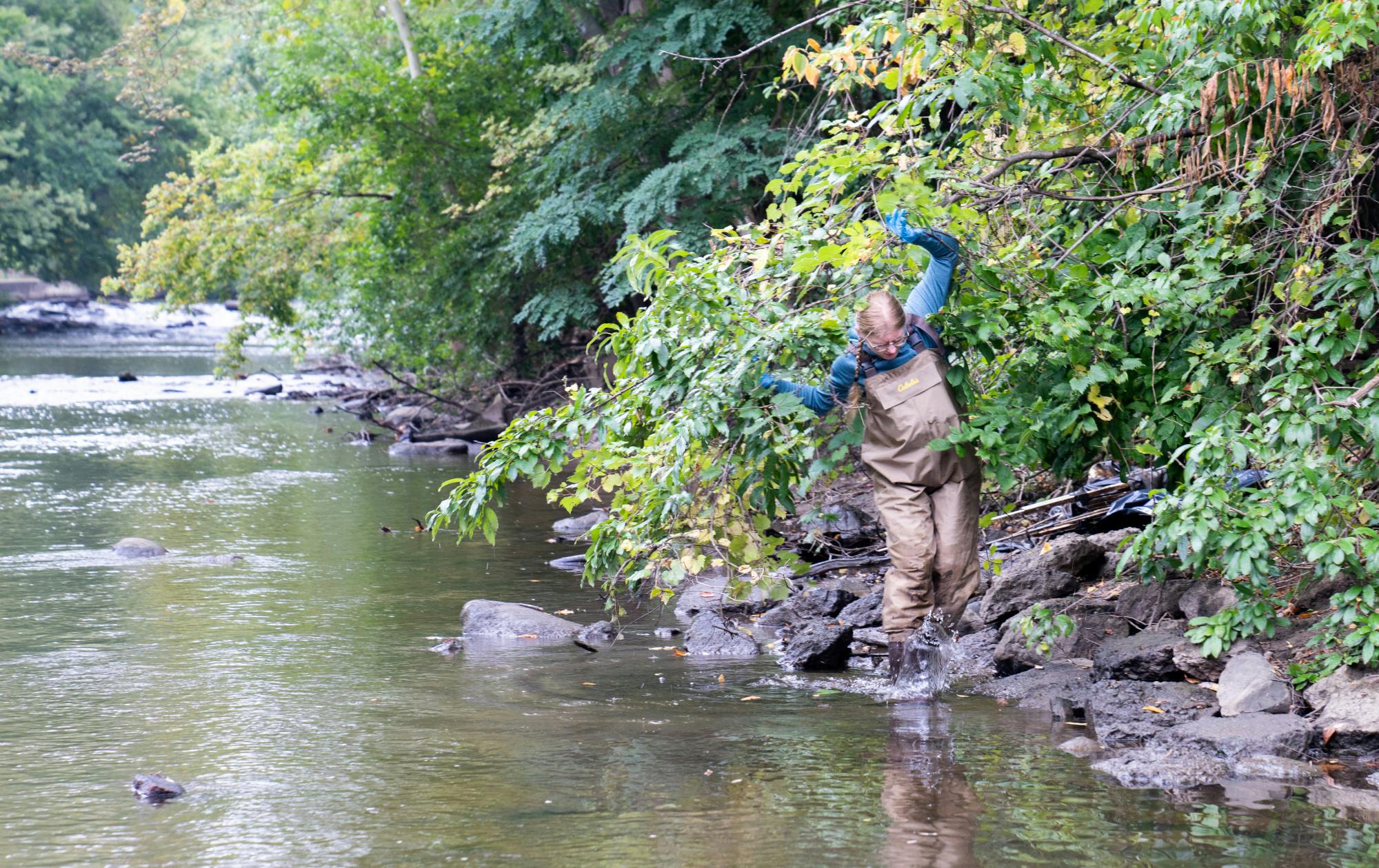On Sunday, Sept. 25, MSU’s Fisheries and Wildlife Club, Outdoors Club and the East Lansing Rotary Club joined forces for a “Red Cedar Clean-Up.” Over 50 students and community members volunteered to help pull waste out of the river.
The clean-up event has been occurring every spring and fall for over 50 years. Organizers said that over the years, volunteers have found a strange collection of items: bottles and cans, tailgate tents, traffic cones, MSU police barricades, engraved plaques, wallets and plenty of bicycles and electric scooters.
Dr. Jo Latimore, an outreach specialist for the Department of Fisheries and Wildlife, did her doctoral research on the Red Cedar at MSU. Thanks to events like the clean-up, she said, the river is in “good shape,” especially given its relatively urban setting.
Improvement Opportunities
Though they agree the river is much healthier than many students would assume, the clean-up's organizers still believe the Red Cedar can be improved.
Fisheries and Wildlife club habitat chair Sarah Naughtin believes that MSU students can have an effect on the river through their everyday actions.
“We all have to walk places, there's garbage everywhere, people walk by tons of it," Naughtin said. "As the average student, it's really easy to just pick up what you see.”
President Molly Engleman pointed to methods of sustainable infrastructure that could help the river, if adopted by MSU or East Lansing.
She commended existing projects, like the high-drainage porous parking lots at IM West and green-roof at Wells Hall. But, she believes more can be done.
Engleman says the abundance of impervious concrete on MSU’s campus is exacerbating the frequent flooding of the river.
“The red cedar is kind of infamous for its floods over the years," Englman said. "A lot of that flooding is exacerbated by urbanization, so it's not really the individual students as it is the result of an urban setting.”
Dr. Latimore said that improving the Red Cedar simply starts with students seeing the river as a valued part of campus.
“Don't forget that we're lucky, we have this really pretty, healthy river running right through our campus,” Latimore said.
A Troubling Trend
This year’s clean-up pulled eight bikes and a dozen electric scooters out of the river.
When asked how many arrests or investigations regarding this trend have occurred since the start of the new academic year, MSUPD spokesperson Dana Whyte said in an email that the department has “not received any reports of people throwing bicycles or electric scooters into the Red Cedar.”
The MSUPD has pursued bike and scooter theft. However, the department struggles to make arrests on the theft of scooters, as companies like Spin and Bird often don’t press charges against scooter theft.
In an email to The State News, a spokesperson for popular electric-scooter company Spin responded to the scooters found in the river by writing that they “strongly discourage riders from leaving scooters anywhere other than an approved parking locations.”
Dr. Latimore worries that the scooters pose a threat to the river’s health, as the corroding batteries could leak pollutants into the water.
The environmental impact of the bicycles is more complicated.
Support student media!
Please consider donating to The State News and help fund the future of journalism.
Engleman, Naughtin and Dr. Latimore explained that when large, oddly-shaped objects like bikes are dropped into the river, they disrupt the natural habitats of its inhabitants. However, over time, the wildlife comes to use the large objects as a habitat. This means that when the objects are removed in events like Sunday’s clean-up, those animals' habitats are disrupted once again, before things can return to normal.
Insects as Indicators
On Thursday, Sept. 22nd, the Fisheries and Wildlife club had a “Red Cedar Sampling” event, where Dr. Latimore taught students to test the health of the river by sampling the macro-invertebrates living in it.
Students searched for indicator species, and drew conclusions about the health of the river based on the ecological tolerances of the organisms found. Dr. Latimore said that Thursday’s sampling found a number of sensitive species, indicating the river is in good health.
According to Dr. Latimore, natural techniques like invertebrate sampling can be even more effective than chemical testing, as chemical testing effectively captures a still image of the river when tested, while the organisms living in it can serve as indicators of the river's health over time.
“If we collect water samples, it’s what it was at the very moment you collected that sample of water," Dr. Latimore said. "But, the insects have to live in it for weeks, months, even years. So, they kind of integrate the conditions over time."
Pesky Pests
Despite the overall optimism surrounding the river’s health, there was one glaring issue: invasive species.
These organisms, which are not native to the Red Cedar ecosystem, spread quickly and pose dangers such as lowering biodiversity.
Dr. William Budnick, a postdoctoral researcher who specializes in invasive species, spent Thursday’s sampling session teaching students about the Rusty Crayfish, an invasive species quickly taking over the Red Cedar.
The species is native to southern Ohio, but according to Dr. Budnick, their popularity as a bait for bass fishermen has spread them across the midwest.
Dr. Latimore said that during Thursday’s macroinvertebrate sampling, she noticed the invasive Asian Clam “everywhere.” She says that when she did her doctoral dissertation on the Red Cedar only 15 years ago, this wasn’t the case.
These invasive species present a challenge for conservationists, as their proclivity for reproduction renders anything short of systemic removal from the entire ecosystem ineffective.
Dr. Budnick said that those worried about the river should report invasive species sightings to the state of Michigan's Department of Natural Resources. The department’s website provides Michiganders with tools to identify and report citings online.
Discussion
Share and discuss “Headed upstream: The health of the Red Cedar River is on the rise” on social media.


